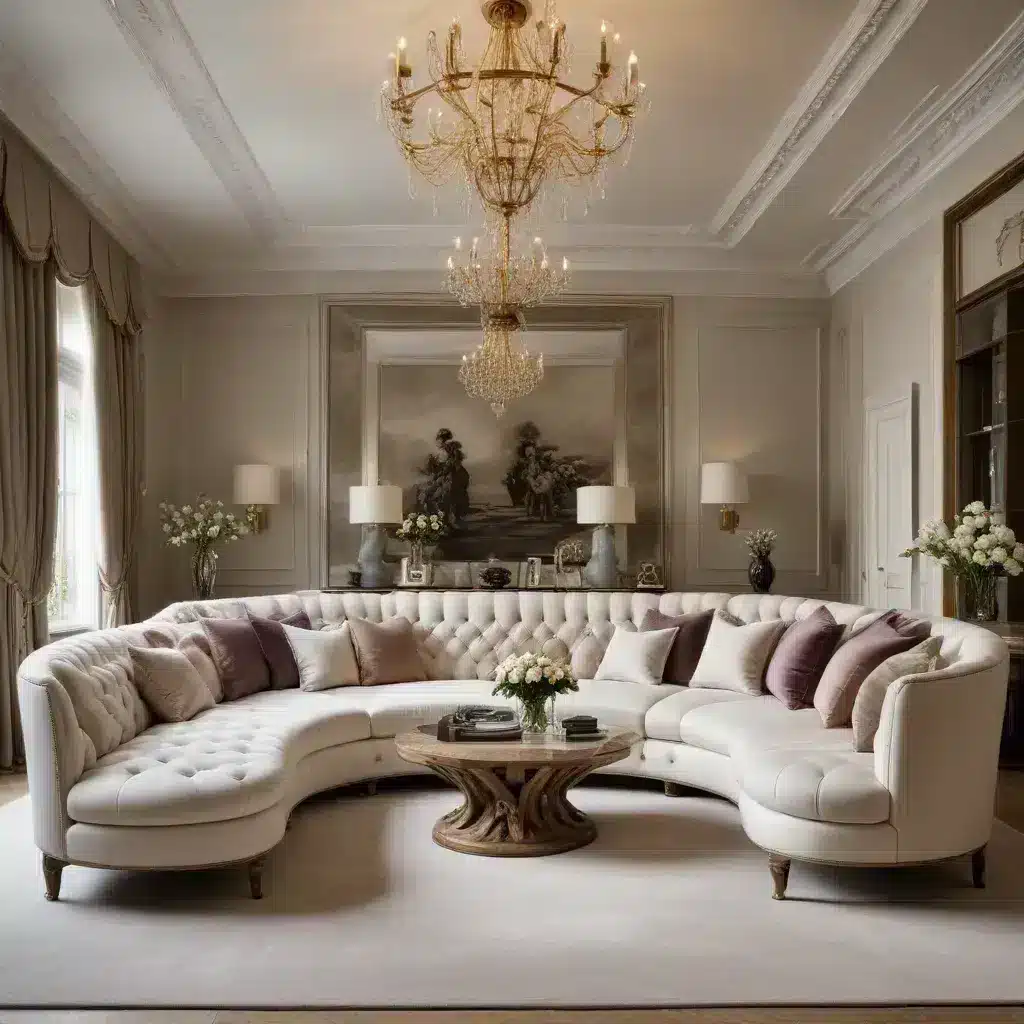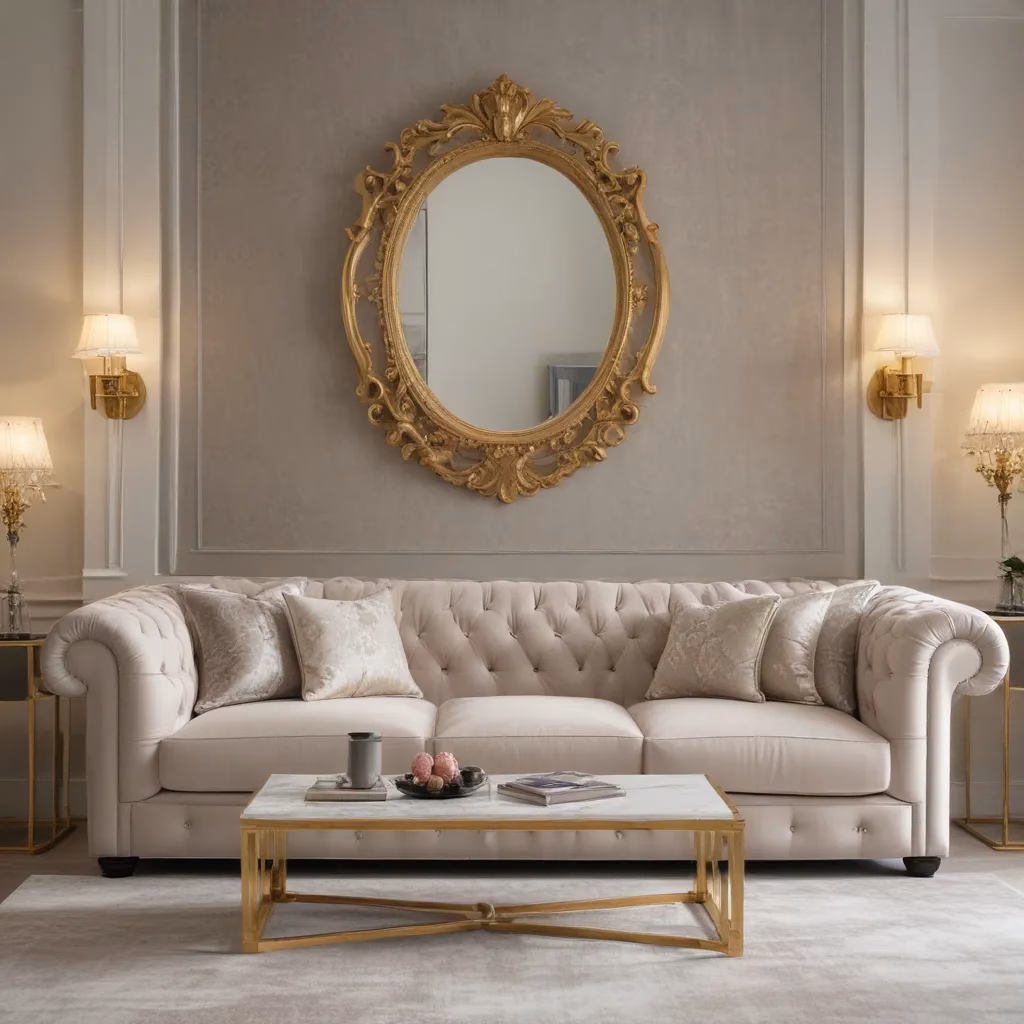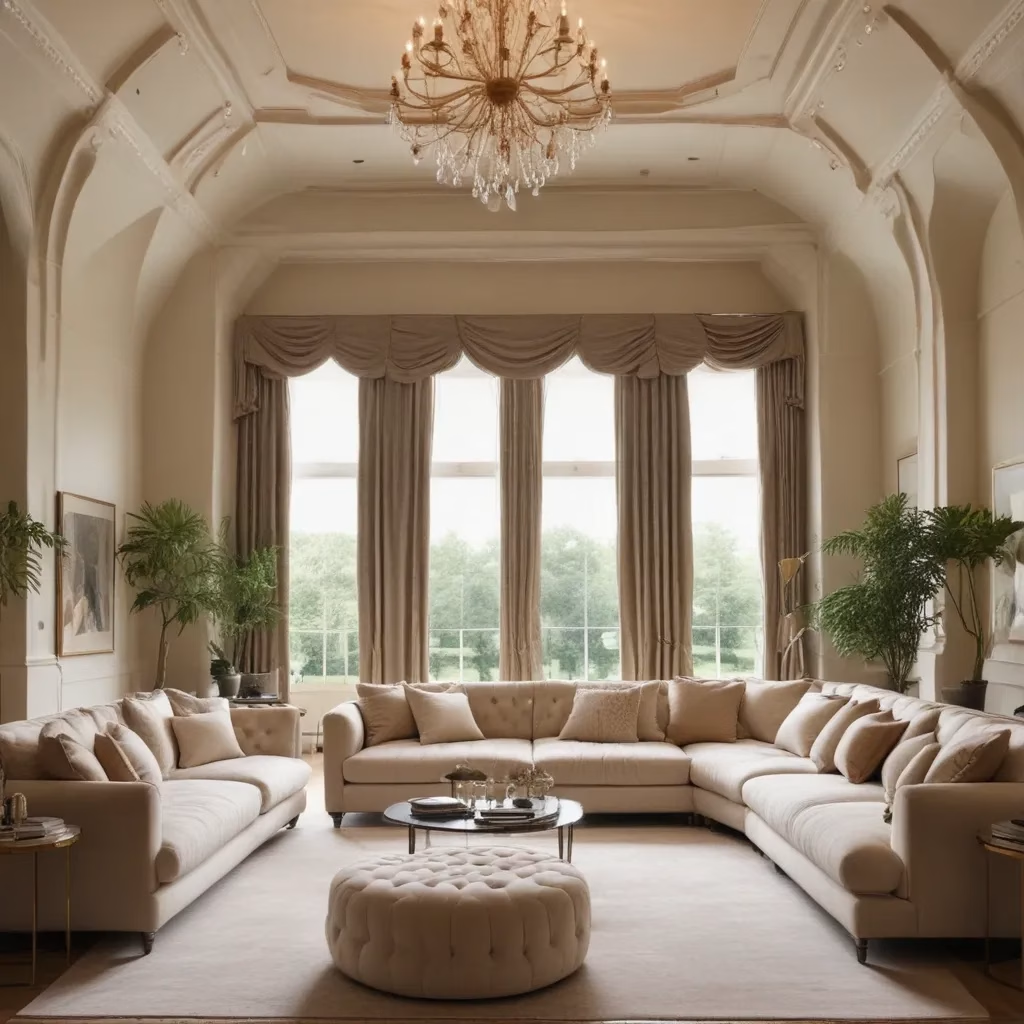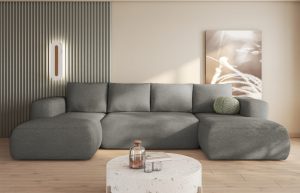
The Art of Sofa Selection: A Personal Journey
As a furniture specialist with years of experience in the industry, I’ve had the privilege of guiding countless homeowners and interior designers through the intricate process of sofa selection. It’s a journey that combines aesthetics, functionality, and personal taste – a delightful challenge that never fails to excite me.
When I first started in this field, I was overwhelmed by the sheer variety of options available. From sleek modern designs to plush traditional styles, the world of sofas seemed endless. But over time, I’ve learned that the key to finding the perfect sofa lies in understanding the unique needs and preferences of each client.
One of my most memorable experiences was working with a young couple who had just moved into their first home. They were torn between a trendy minimalist sofa and a more comfortable, family-friendly option. After several discussions and fabric swatches later, we found a beautiful compromise – a clean-lined sofa with deep, cozy cushions upholstered in a durable, stain-resistant fabric. The smile on their faces when they sank into their new sofa for the first time was priceless.
Understanding Sofa Construction: The Foundation of Comfort
When it comes to sofas, what’s inside truly counts. The construction of a sofa determines not only its comfort but also its longevity. Let’s break down the key components:
Frame Materials: The Backbone of Your Sofa
The frame is the skeleton of your sofa, providing structure and support. In my experience, hardwood frames, particularly those made from kiln-dried oak, maple, or birch, offer the best durability. I once visited a furniture factory where I witnessed the meticulous process of selecting and treating wood for sofa frames. The craftsmen explained how kiln-drying removes moisture from the wood, preventing warping and cracking over time.
However, engineered wood products like plywood or particleboard can also be viable options, especially for budget-conscious buyers. The key is to ensure that the frame is well-constructed, with reinforced corners and joints.
Suspension Systems: The Secret to Long-lasting Comfort
The suspension system is what gives a sofa its “bounce” and support. There are several types, each with its own characteristics:
-
Eight-way hand-tied springs: Often considered the gold standard, these provide excellent support and distribute weight evenly. I’ve sat on sofas with this suspension that were decades old and still felt incredibly comfortable.
-
Sinuous springs: These S-shaped wires offer good support and are more affordable. They’re particularly suitable for sofas with clean, modern lines.
-
Web suspension: Made of elastic webbing, this system is lightweight and often used in mid-century modern designs.
-
Pocket coils: Similar to those found in mattresses, these individually wrapped springs offer personalized comfort and minimal motion transfer.
Cushion Fillings: The Comfort Layer
The filling material in cushions plays a crucial role in the sofa’s comfort and appearance. Here’s a comparison of common filling materials:
| Filling Type | Comfort Level | Durability | Maintenance |
|---|---|---|---|
| High-density foam | Firm, supportive | High | Low |
| Down | Soft, luxurious | Medium | High |
| Polyester fiber | Soft, affordable | Low | Medium |
| Foam/down blend | Balanced comfort | High | Medium |
In my practice, I often recommend a combination of materials for the best results. For instance, a high-density foam core wrapped in a down-alternative fiber can offer both support and softness.
Upholstery Fabrics: The Canvas of Your Sofa
Choosing the right upholstery fabric is like selecting the perfect outfit for your sofa. It’s not just about aesthetics; durability and maintenance are equally important factors.
Natural Fibers: Timeless Beauty
Natural fibers like cotton, linen, and wool have a timeless appeal. They’re breathable and comfortable but can be more prone to staining and wrinkling. I always advise clients to consider their lifestyle when opting for natural fibers. For a family with young children or pets, I might suggest a more durable alternative or a performance fabric with a natural look.
Synthetic Fabrics: Durability Meets Style
Synthetic fabrics such as polyester, nylon, and acrylic have come a long way in terms of look and feel. They’re often more resistant to stains, fading, and wear. I’ve been particularly impressed with the advancements in microfiber fabrics, which can mimic the look of suede while offering superior stain resistance.
Performance Fabrics: The Best of Both Worlds
Performance fabrics are a game-changer in the world of upholstery. These engineered textiles offer the best of both natural and synthetic fibers – beauty, comfort, and incredible durability. I’ve seen red wine spills wiped clean from white performance fabric sofas with just water – a feat that would have been unthinkable a decade ago.
Leather: Luxurious and Long-lasting
Leather is a classic choice that only gets better with age. It’s durable, easy to clean, and develops a beautiful patina over time. However, it’s important to understand the different types of leather:
- Full-grain leather: The highest quality, showing natural markings and imperfections.
- Top-grain leather: Slightly corrected for a more uniform appearance.
- Split leather: Less durable but more affordable.
- Bonded leather: Made from leather scraps, it’s the least durable option.
I always encourage clients to touch and feel leather samples before making a decision. The texture and aroma of high-quality leather can be truly captivating.
Sofa Styles: Finding Your Perfect Match
The style of your sofa sets the tone for your entire living space. Over the years, I’ve helped clients navigate through various styles to find the one that resonates with their personal taste and complements their home.
Traditional Sofas: Timeless Elegance
Traditional sofas are characterized by their curved lines, rolled arms, and ornate details. They often feature tufted backs, nailhead trim, and turned legs. I find that traditional sofas work beautifully in both classic and eclectic interiors, adding a touch of sophistication and warmth.
One of my clients, an antique collector, was looking for a sofa that would complement her vintage pieces without overpowering them. We chose a traditional Chesterfield sofa in a rich, burgundy leather. The deep button tufting and rolled arms echoed the craftsmanship of her antiques, while the streamlined silhouette kept the room from feeling too heavy.
Modern and Contemporary Sofas: Clean Lines and Minimalism
Modern and contemporary sofas focus on simplicity and clean lines. They typically feature straight arms, metal legs, and minimal ornamentation. These sofas are perfect for creating a sleek, uncluttered look in your living room.
I recently worked with a tech entrepreneur who wanted to transform his loft into a modern oasis. We selected a low-profile sectional with crisp lines and brushed steel legs. The neutral grey upholstery provided a perfect canvas for his colorful art collection, creating a harmonious balance between simplicity and vibrancy.
Mid-Century Modern Sofas: Retro Chic
Mid-century modern sofas have seen a resurgence in popularity, and for good reason. Their organic shapes, tapered legs, and bold colors bring a sense of nostalgia and fun to any space. These sofas work particularly well in eclectic interiors or as statement pieces in more neutral rooms.
I recall a project where we incorporated a bright orange, mid-century inspired sofa into a predominantly neutral living room. The sofa became an instant focal point, infusing the space with energy and personality.
Transitional Sofas: The Best of Both Worlds
Transitional sofas blend elements of traditional and contemporary styles, offering a versatile option that can adapt to various décor schemes. They typically feature clean lines with subtle traditional details, making them a safe choice for those who want a timeless look.
For a couple who couldn’t agree on a style – one favoring traditional, the other modern – a transitional sofa proved to be the perfect compromise. We chose a design with gently sloped arms, subtle tufting, and streamlined cushions. The result was a piece that satisfied both preferences and tied their eclectic furniture collection together beautifully.
Space Planning: Maximizing Your Living Room’s Potential
Selecting the right sofa is only half the battle; placing it correctly in your space is equally crucial. Over the years, I’ve developed some strategies for maximizing living room layouts:
The Focal Point Approach
Every room needs a focal point, and in many living rooms, the sofa plays this role. I often advise clients to position their sofa facing the room’s natural focal point, be it a fireplace, a large window with a view, or a media center.
In one memorable project, we rearranged a client’s living room to face their previously underutilized bay window. The new layout not only improved the flow of the room but also allowed the family to enjoy the beautiful garden view from their sofa.
The Conversation Circle
For clients who love to entertain, I recommend creating a conversation circle. This involves placing the sofa and other seating pieces to face each other, promoting interaction and easy conversation.
I once worked with a sociable couple who hosted weekly game nights. We arranged their sectional sofa in an L-shape and added two accent chairs to create a cozy conversation area around a large ottoman that doubled as a coffee table and extra seating when needed.
The Multi-functional Space
In today’s homes, living rooms often serve multiple purposes. When space is at a premium, I help clients choose sofas that can adapt to different needs.
For a young professional living in a studio apartment, we selected a sleeper sofa that could transform into a comfortable bed for guests. During the day, it served as a stylish seating area for work and relaxation.
The Open Plan Challenge
Open plan living spaces present unique challenges in furniture arrangement. Here, sofas can act as room dividers, defining separate areas within a larger space.
In a recent project involving a large open-plan area, we used a long sectional sofa to delineate the living area from the dining space. The back of the sofa created a natural walkway, improving the flow between the two zones.
Sofa Maintenance: Preserving Your Investment
A high-quality sofa is an investment, and proper maintenance is key to ensuring its longevity. Here are some tips I always share with my clients:
Regular Cleaning
Vacuuming your sofa weekly helps prevent dust and dirt from settling into the fabric. Use the upholstery attachment and go over the entire surface, including the back and under the cushions.
For leather sofas, I recommend using a soft, dry cloth to dust regularly. Avoid using water or cleaning products unless specifically designed for leather care.
Addressing Spills Promptly
Accidents happen, but quick action can prevent permanent stains. Blot (don’t rub) spills immediately with a clean, white cloth. For water-based spills on fabric upholstery, a mixture of mild soap and water can be effective.
I always advise clients to keep a fabric protection spray on hand for emergencies. These sprays can buy you valuable time to properly clean a spill before it sets.
Professional Cleaning
Even with regular care, sofas benefit from professional cleaning every 12-18 months. Professional cleaners have the expertise and equipment to deep clean your sofa without damaging the fabric or structure.
I’ve seen dramatic transformations with professional cleaning – sofas that looked tired and worn came out looking almost new.
Rotating Cushions
To ensure even wear, rotate and flip your cushions regularly. This is particularly important for sofas that get heavy use in certain areas, like the spot in front of the TV.
One of my clients extended the life of their sofa by several years simply by implementing a regular cushion rotation schedule.
Protecting from Sunlight
Direct sunlight can fade and damage upholstery over time. If your sofa is positioned near a window, consider using sheer curtains or UV-protective window film to minimize sun damage.
I once worked with a client whose beautiful blue velvet sofa had faded to an uneven color due to sun exposure. We were able to salvage it by reupholstering the faded sections and implementing better sun protection measures.
The Future of Sofa Design: Innovations and Trends
As someone deeply immersed in the furniture industry, I’m always excited to see new innovations and trends in sofa design. Here are some developments that I believe will shape the future of sofas:
Smart Sofas
The integration of technology into furniture is an exciting frontier. I’ve seen prototypes of sofas with built-in charging stations, heating elements, and even massage functions. While these features are still in their early stages, I believe they’ll become more refined and commonplace in the coming years.
Sustainable Materials
Sustainability is becoming increasingly important in furniture design. I’m seeing a growing trend towards sofas made with recycled materials, sustainably sourced wood, and organic fabrics. Some manufacturers are even experimenting with biodegradable foam alternatives.
Modular Designs
Flexibility is key in modern living spaces. Modular sofas that can be rearranged to suit different needs are gaining popularity. I recently worked with a client who loved the idea of being able to reconfigure their living room for different occasions, from intimate gatherings to large parties.
Multifunctional Pieces
As urban living spaces become smaller, there’s a growing demand for furniture that serves multiple purposes. Sofas with built-in storage, pull-out beds, or convertible designs are becoming more sophisticated and stylish.
Bespoke Creations
While mass-produced sofas will always have their place, I’m seeing a renewed interest in custom-made pieces. Clients are increasingly drawn to the idea of having a sofa that’s uniquely theirs, from the frame design to the fabric choice.
At Sofa Spectacular, we’re embracing these trends and innovations, constantly updating our offerings to provide our clients with the latest in sofa design and technology.
Conclusion: Your Perfect Sofa Awaits
Choosing the right sofa is a personal journey, one that combines practical considerations with aesthetic preferences. Whether you’re drawn to the classic elegance of a traditional Chesterfield or the sleek lines of a modern sectional, there’s a perfect sofa out there for you.
Remember, a sofa is more than just a piece of furniture – it’s the heart of your living space, where memories are made and stories are shared. Take your time in selecting the right one, considering not just how it looks, but how it fits into your lifestyle and home.
As we’ve explored in this article, from construction techniques to upholstery options, from style choices to maintenance tips, there’s a lot to consider when choosing a sofa. But with the right knowledge and guidance, you can find a piece that will bring comfort and joy to your home for years to come.
At Sofa Spectacular, we’re passionate about helping our clients find their perfect sofa. Whether you’re looking for a custom-made piece or exploring our carefully curated collection, we’re here to guide you through every step of the process. Your dream sofa is waiting – let’s find it together.




